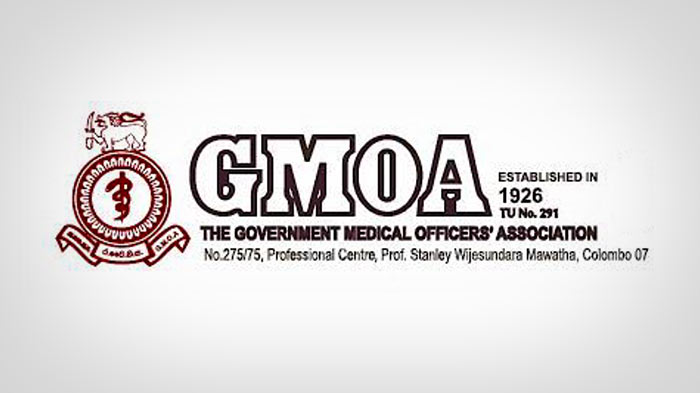COVID-19 outbreak: Resources in State hospitals inadequate – GMOA

Doctors yesterday (13), lamented that the resources available in Government hospitals assigned to carry out surveillance and treat patients with COVID-19 were inadequate in the face of a sudden influx of patients.
Briefing the Media, Secretary of the Government Medical Officers’ Association (GMOA), Dr. Haritha Aluthge cautioned, although Sri Lanka currently had only two COVID-19 patients being treated at the National Institute of Infectious Diseases (NIID) the probability was that they as well as the Italian tourists whom the first local patient had been guiding had infected more people during the time that had lapsed.
There are 18 hospitals assigned by the Health Ministry to deal with COVID-19 including the most recent being the General Hospital, Polonnaruwa.
The other Hospitals include the NIID, the National Hospitals of Colombo and Kandy, the Lady Ridgeway Hospital, the Castle Street Hospital for Women, the Base Hospital of Mulleriyawa, the District Hospitals of Negombo, Gampaha and Hambantota, the Teaching Hospitals of Ragama, Karapitiya, Jaffna, Batticaloa,
Anuradhapura and Ratnapura, and the Provincial Hospitals of Kurunegala and Badulla. There are other areas where suspect cases could be admitted to such as the Awissawella and Homagama Hospitals.
“The available facilities should be adequate to provide optimal health care to a large number of patients with the virus. Therefore, at least satisfactory health care should be provided at those hospitals that have been identified by the Ministry for this purpose but unfortunately this has not been the case,” he lamented.
“One patient can infect five persons so there is the probability that the two current Sri Lankan patients have infected at least another 10. There is no guarantee that the disease would not spread drastically from those cases as well. Therefore, there is a dire need to strengthen these Hospitals to meet the demand.”
He urged the President, the Government and the health authorities to take necessary precautions by increasing the number of isolation rooms in he Hospitals that have been identified. “Some of them have only four or one such room as at the Lady Ridgeway Hospital for Children.
The situation forces some of these Hospitals to admit two patients to one isolation room which increases the probability of the infection even if only one patient carried the COVID-19”.
“However, the good thing about the virus infection is that at least 80 to 85 per cent patients suffer a cough and a cold while only 15% develop severe symptoms. Of them too, only 2% succumb to it.”
Identifying the groups that should be safeguarded, Dr. Aluthge said that persons suffering from heart disease, diabetes, chronic respiratory infections, high blood pressure and cancer fell into the said category.
Dr. Aluthge said that in Sri Lanka, special attention should also be given to expectant mothers and those with high risk jobs such as health workers and airport and civil aviation workers, and the armed forces who risked their well-being as they were the ones directly involved in dealing with those who were either infected, in quarantine or were arriving from countries which were still in the clutches of the virus.
He therefore urged the Government to provide health workers from medical staff to laboratory services to minor employees, all dealing with suspect cases or those diagnosed with the disease, with personal protective equipment (PPE) to ensure their safety.
He said that his outfit had directed all Government hospitals that had been identified by the Ministry to submit their shortcomings so that in turn they could submit a report in this regard to President Gotabaya Rajapaksa by 16 March with an appeal. If any of these groups also contracted the disease, who would assist in caring for the infected or suspected? He queried.
(Source: Ceylon Today – By Dilanthi Jayamanne)
Latest Headlines in Sri Lanka
- Asoka Ranwala granted bail December 12, 2025
- MP Asoka Ranwala arrested for reckless driving December 12, 2025
- ADB approves $200 Million loan to boost Sri Lanka’s Mahaweli Development Program December 12, 2025
- Sri Lankan companies donate generously to “Rebuilding Sri Lanka” fund for Cyclone Ditwah relief December 12, 2025
- Court orders re-issuance of warrants in Central Bank bond scam case December 12, 2025


